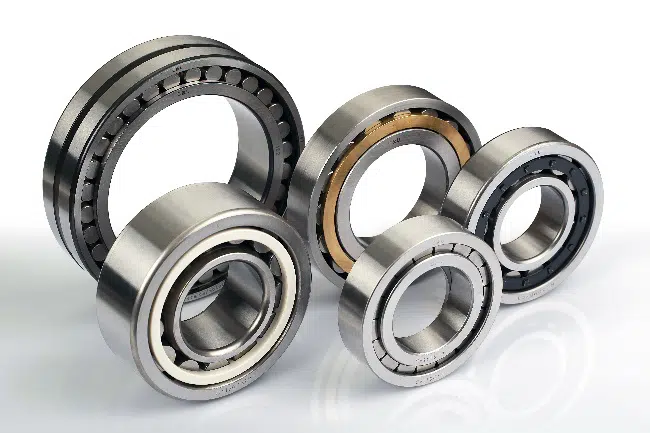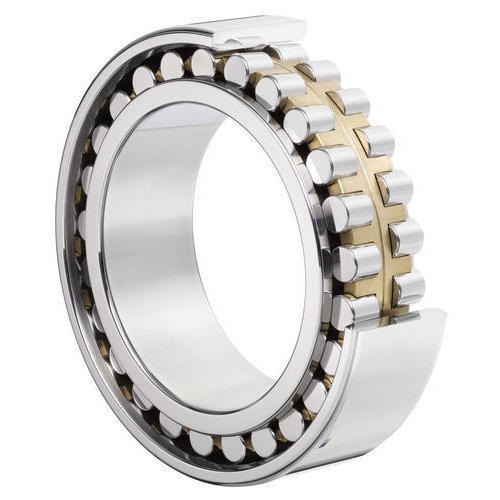Product Description
Different type:
| Designation | Dimensions | Basic Load Ratings | Limiting Speed | Mass | ||||||||||||||
| d | D | T | B | C | r1 | r | Cr | Cor | ||||||||||
| min. | min. | Dynamic | Static | |||||||||||||||
| SFT | mm | kN | Rpm | g | ||||||||||||||
| 35713 | 17 | 40 | 13.25 | 12 | 11 | 1 | 1 | 20.7 | 21.9 | 9 |
546467 576467 |
BAHB445539 |
FC12571 GB4571 FC12784S03 |
IR-2220 |
C525 L29 |
|||
| DAC2552 | HB-3080C/SBR | 513116 | ||||||||||||||||
| DAC306E1 AU 0571 -4LL | BAH/SBR | IR-8622 | ||||||||||||||||
| DAC3564 | GB12807S03 GB40706 | IR-8066 | 770309571 | |||||||||||||||
| DAC37725717 | 527631 | BA2B 633571CB | ||||||||||||||||
| DAC3772571 | 562398A | BAHB633531B BAHBC 439622C 540360 | 4TCRI-0868 De571 | BA2B 309692 BA2B 35716 BAHB 35711 BAHB 311315BD | 39BWD02 39BWD03CA69 | IR-8052 IR-8111 | ||||||||||||
| DAC3968 BAHB 311396B BAHB | BAHB311443B | GB12320 S02 | IR-8095 | Fw130 | ||||||||||||||
| DAC40720637 | 51 | |||||||||||||||||
| DAC4074A | GB12399 S01 | IR-8530 | 328723 | |||||||||||||||
| DAC4571033 | 55580 539166 | 40BWD08AC55 | 51D 521771 | BA2B633457 BAHB311424A BAHB309245 BAHB603694A BAHB633196 BAHB633791 | GB12571 | IR-8061 IR-8509 | 513102 513112 LR571 | |||||||||
| DAC4276 | BA2B35718 BA2B309609 | IR-8515 | 513154 | |||||||||||||
| DAC4282 | BA2B446047 BAHB446097 GB4571 | GB12163S04 GB12875 GB4571 | IR-8086 IR-8642 | 513073 | ||||||||||||
| DAC4282 | ||||||||||||||||
| DAC458A | BAHB633960 | |||||||||||||||
| DAC4587
Do you prefer that we remind you ? Immediate and free call/email back 2nd step: the outside diameter of the bearing
3rd step: the thickness of the bearing
Conclusion :You now have 3 measuring elements that will allow you to identify your bearing: the inside diameter (or bore), the outside diameter, and the thickness. You can postpone these measurements in our bearing search tool on our website FAQ
1.How many is the MOQ of your company? 2.Could you accept OEM and customize?
3.How do you guaranee the quality?
4.Do you have stocks?
5.Do you have only Hubs Wheel Auto Bearing? YES,we have more others types bearings,ANY BEARING YOU CAN THINK OF NOW,WE HAVE!
Advancements in Tapered Roller Bearing TechnologyTapered roller bearing technology has undergone significant advancements over the years, driven by the demands of modern industrial applications and the pursuit of enhanced performance, efficiency, and durability. These advancements have led to innovations in design, materials, manufacturing processes, and lubrication. Here are some key insights into the advancements in tapered roller bearing technology:
Manufacturers are exploring new materials and alloy compositions to improve bearing strength, fatigue resistance, and high-temperature performance. Specialized coatings and surface treatments are applied to enhance corrosion resistance and reduce friction.
Modern design techniques, such as computer-aided modeling and simulation, allow for the optimization of bearing geometry and internal structures. This results in improved load distribution, reduced stress concentrations, and enhanced overall performance.
Cage designs have evolved to ensure better roller guidance, reduced friction, and minimized wear. Innovative cage materials and shapes enhance lubricant flow and promote efficient operation, especially at high speeds.
Advancements in lubrication technology have led to the development of specialized lubricants and lubrication systems. These solutions offer better protection against wear, reduce friction, and ensure consistent lubrication even in challenging operating conditions.
Modern manufacturing methods, such as precision grinding and superfinishing, allow for tighter tolerances and improved surface finishes. This contributes to smoother rolling contact, reduced vibration, and lower noise levels.
Advances in sensor technology enable the integration of condition monitoring systems within tapered roller bearings. These sensors provide real-time data on factors like temperature, vibration, and lubrication, allowing for predictive maintenance and performance optimization.
Manufacturers offer more customization options to cater to diverse industrial applications. This includes bearings optimized for specific operating conditions, load requirements, and environmental challenges.
The integration of tapered roller bearing data into digital platforms aligns with the principles of Industry 4.0. Remote monitoring, predictive analytics, and digital twins are used to enhance maintenance strategies and maximize bearing lifespan.
Advancements in tapered roller bearing technology align with global efforts to improve energy efficiency. Reduced friction, optimized designs, and efficient lubrication contribute to overall equipment energy savings.
Manufacturers are exploring sustainable materials and manufacturing processes to reduce the environmental impact of bearing production. Eco-friendly lubricants and packaging solutions are also gaining attention. Overall, advancements in tapered roller bearing technology continue to drive innovation across industries, providing solutions that meet the evolving needs of modern machinery and contribute to improved performance, reliability, and sustainability. Are there different cage materials commonly used in cylindrical roller bearings?Yes, there are different cage materials commonly used in cylindrical roller bearings. The cage, also known as a retainer or separator, is a critical component that holds the cylindrical rollers in position and maintains their proper spacing. The choice of cage material depends on various factors such as application requirements, operating conditions, and the desired balance between strength, durability, and cost. Let’s explore some of the commonly used cage materials in cylindrical roller bearings:
Steel cages are widely used in cylindrical roller bearings due to their excellent strength, durability, and wear resistance. Steel cages can withstand high operating temperatures and are suitable for applications with heavy loads and high-speed operation. The steel cages are typically made from low carbon steel, and in some cases, high-strength brass-coated steel or other alloyed steels are used for enhanced performance in demanding environments.
Brass cages offer good strength, high corrosion resistance, and excellent heat dissipation properties. They are commonly used in cylindrical roller bearings for applications that require resistance to harsh operating conditions, such as high temperatures or corrosive environments. Brass cages are particularly suitable for slow to moderate speed applications where their excellent thermal conductivity can help dissipate heat effectively.
Polyamide cages, often referred to as nylon cages, are lightweight, corrosion-resistant, and have good wear properties. They offer low friction and allow for smooth rolling motion of the cylindrical rollers. Polyamide cages are commonly used in applications where reducing weight and inertia are important considerations, such as automotive and aerospace industries. They are also suitable for applications with moderate speeds and operating temperatures.
Phenolic resin cages are known for their high strength, low friction, and excellent dimensional stability. These cages provide good resistance to wear, chemicals, and heat. Phenolic resin cages are commonly used in high-speed cylindrical roller bearings where low cage weight and inertia are crucial for reducing friction and maintaining stable operation at high rotational speeds.
In addition to the above-mentioned materials, other cage materials such as aluminum alloys, stainless steel, and engineered plastics may be used in specific applications. Aluminum alloy cages offer lightweight properties and good corrosion resistance, making them suitable for certain industries. Stainless steel cages provide high corrosion resistance and are used when the bearing operates in aggressive environments. Engineered plastics, such as PEEK (polyether ether ketone) or PTFE (polytetrafluoroethylene), are used for their self-lubricating properties, chemical resistance, and low friction characteristics. The choice of cage material depends on factors such as load, speed, temperature, lubrication, and environmental conditions. Bearing manufacturers carefully select the appropriate cage material to ensure optimal performance, longevity, and reliability of the cylindrical roller bearing in a specific application. Can you describe the load-carrying capacity and load ratings of cylindrical roller bearings?Cylindrical roller bearings have specific load-carrying capacity and load rating characteristics that determine their performance under different operating conditions. Let’s delve into the details of load-carrying capacity and load ratings for cylindrical roller bearings:
Cylindrical roller bearings are primarily designed to handle radial loads, which are forces applied perpendicular to the shaft. They have a high radial load-carrying capacity due to the arrangement of cylindrical rollers and their large contact area with the raceways. The load is distributed evenly along the length of the rollers, allowing cylindrical roller bearings to support heavy machinery components and withstand substantial radial forces.
While cylindrical roller bearings are primarily intended for radial loads, they can also accommodate moderate axial loads, which are forces applied parallel to the shaft. The axial load-carrying capacity of cylindrical roller bearings is limited compared to their radial load capacity. Therefore, for applications with predominantly axial loads, other types of bearings, such as thrust bearings, should be considered.
The dynamic load rating is a key parameter that indicates the maximum load a bearing can withstand under specific operating conditions without suffering premature fatigue failure. It is defined as the constant radial load (or radial equivalent load) that a group of identical bearings can theoretically endure for a rating life of one million revolutions. The dynamic load rating is specified by the bearing manufacturer and is expressed in Newtons (N) or pounds-force (lbf).
The static load rating of a cylindrical roller bearing represents the maximum radial load it can sustain without exhibiting excessive permanent deformation. Unlike the dynamic load rating, which considers the fatigue life of the bearing, the static load rating focuses on the bearing’s ability to withstand a static load for an extended period without experiencing plastic deformation or other permanent damage. Similar to the dynamic load rating, the static load rating is provided by the manufacturer and is expressed in Newtons (N) or pounds-force (lbf).
The load ratings of cylindrical roller bearings are determined through standardized calculation methods defined by international standards organizations such as ISO (International Organization for Standardization) and ABMA (American Bearing Manufacturers Association). These calculations take into account factors such as bearing dimensions, geometry, material properties, and operating conditions to establish the dynamic and static load ratings for a specific bearing model.
When selecting cylindrical roller bearings for a particular application, it is crucial to consider the expected load requirements, load orientation, and operating conditions. The calculated load ratings should be compared to the actual loads that the bearing will experience in the application to ensure that the chosen bearing can safely and reliably support the anticipated loads throughout its service life. In conclusion, cylindrical roller bearings have a high radial load-carrying capacity and can accommodate moderate axial loads. The dynamic and static load ratings provided by the manufacturer serve as important parameters for assessing the bearing’s load-carrying capability and determining its suitability for specific applications.
|




